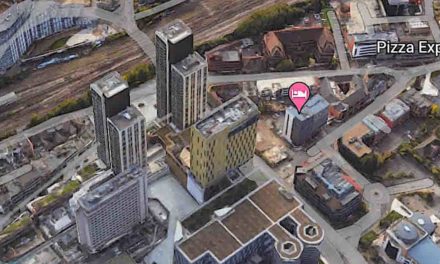A new code of practice has been published for commercial property relationships in light of ongoing effects of Covid-19. David Thomas, partner at Thames Tap sponsor Vail Williams, dissects the new code.
The new code of practice to guide commercial property relationships comes in addition to the Government’s announcement of an extension, to September 30, of the relief from lease forfeiture.
The new code in a response to the significant financial consequences of lockdown restrictions put in place on businesses and the economic disruption which will continue to be felt for some time.
To date, support has consisted of a moratorium on forfeiture until June 30, together with guaranteed loans, furlough support, and business rate relief.
The objective of the new code is to provide support for tenants, landlords and lenders, whilst supporting economic recovery as quickly as possible.
In it, the Government sets out that tenants who can pay their rent should continue to do so while those that cannot should communicate with their landlord and pay what they can.
However, going forward, the new code attempts to support business in the negotiation of affordable rental payments by giving them the ‘tools’ to come to a mutually beneficial agreement with their landlords, through best practice.
But what does the code say, and does it have any teeth other than being considered best practice?
The first thing to point out is that the code is voluntary and does not change the underlying contractual relationship between landlord, tenant or any guarantor.
What it does do is ask for all parties to work together to find a temporary and sustainable arrangement for a shared recovery plan which will allow landlords to support those tenants in the greatest need, whilst having regard to their own financial commitments and fiduciary duties.
How ‘need’ is defined is open to significant differences in interpretation in, for example, the level of financial strain felt by a small well-run family business versus a large, yet badly-run, retail chain.
The positioning of the code is that the government has provided support via the coronavirus job retention scheme, loans, grants, business rate relief and VAT deferral to help organisations save jobs and meet the costs of managing their business – one of which being rent.
The code applies to all commercial leases, not just hospitality and retail, and attempts to provide a framework of options to agree rental payment or deferment plans. For those landlords and tenants who have already agreed alternative payment plans, the code expects existing arrangements to be honoured.
In addition, UK Finance emphasised Government bank facilities of £27.5 billion in loans with flexible facilities in capital payment holidays as support for landlords.
So what principles are set out in the code and will they have any effect?
- Transparency and collaboration
The code emphasises mutual interest in business continuity with a focus on landlords and tenants being economic partners rather than opponents.
- A unified approach
This is to help and support each other in dealings with any other stakeholders including Government, utility companies, banks and others.
- Government support
There is a presumption here that businesses will have relied on the support outlined above rather than turning to their landlord as a lender of last resort. This has been the response of many landlords to date, asking for evidence a business has sought all other means before turning to its landlord.
- To act reasonably and responsibly
But reasonable and responsible to whom? Each other, the dependants of a failing business or the shareholders?
- Third party resolution
Independent impartial assistance should be sought when negotiations have broken down.
- Co-operation
Tenants need to be transparent as to why they need help and provide financial information to support their request. Equally, landlords should also evidence their own financial commitments and fiduciary duties, evidencing why they are refusing concessions.
Meanwhile, the code goes on to suggest several arrangements that could be agreed between landlord and tenant, including full or partial rent-free periods, deferral of rent, monthly rents, turnover rents and drawing on rent deposits.
It then goes on to say any of these changes to rental payments in return for a reversionary lease, removal of breaks or extension of the lease.
This last point is, in our view, controversial as no tenant should have a gun held to their head to extend a lease or remove a break clause at the point their business is facing such significant uncertainty over future trading.
There is a risk this could be interpreted by landlords as a point of leverage against tenants for their own gain rather than as the code is intended and tenants should seek professional advice before agreeing to such arrangements.
Of course, as with any formal arrangements, whatever is negotiated between a landlord and tenant should be documented formally, either by way of a side letter or deed of variation which would be binding on any future landlord.
If you would like to discuss any of the issues discussed in this article in more detail, don’t hesitate to get in touch with us – whether landlord or tenant/occupier.
© Thames Tap No 216 (powered by ukpropertyforums.com)













